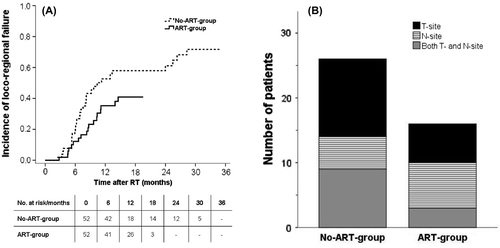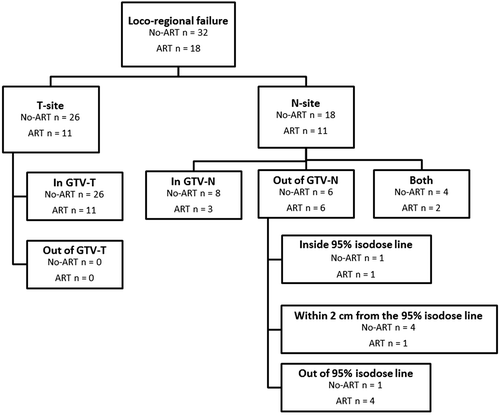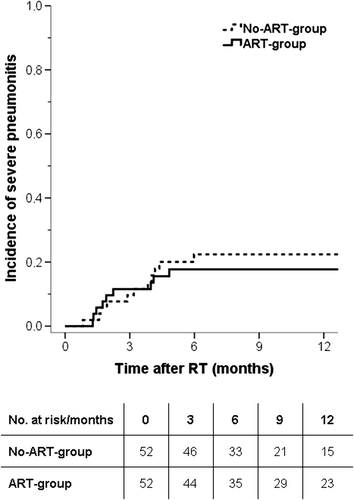Figures & data
Table I. Patients- and tumour characteristics.
Table II. Margins and dosimetric characteristics.
Figure 1. Loco-regional progression in lung cancer patients treated with curative chemo-radiotherapy with an adaptive strategy (ART-group) and without an adaptive strategy (No-ART-group). A) Actuarial analysis of the time to loco-regional progression compared for the two groups. B) The 12-months distribution of loco-regional failures in tumour site (T-site), lymph node site (N-site) or both is exposed for the two groups.

Figure 2. Analysis of all loco-regional failures occurring in lung cancer patients (n = 104) treated with radiotherapy with an adaptive strategy (ART) or without an adaptive strategy (No-ART). Failures were analysed with regards to GTV-T and GTV-N as delineated on the planning CT. Recurrences lying outside GTV-T and/or GTV-N were evaluated with regards to the vicinity to the 95% isodose line of the treatment plan. This was done to detect incidences of marginal failure, defined as failure within 2 cm of the 95% isodose line. Patients who developed recurrence in T- and N-site simultaneously were analysed separately on T- and N-site.


